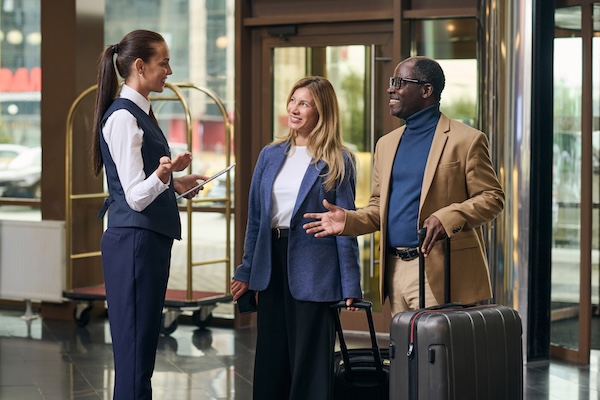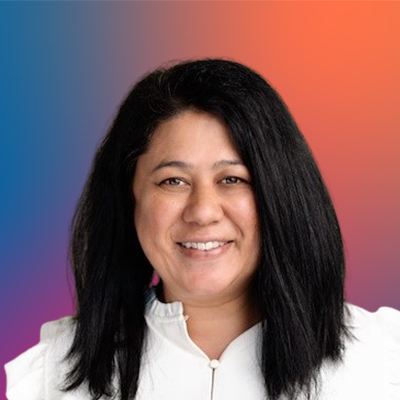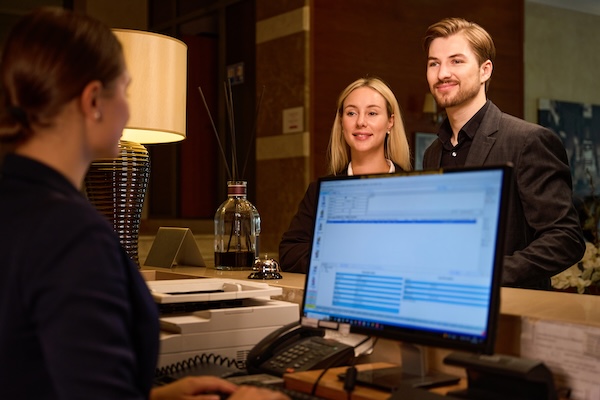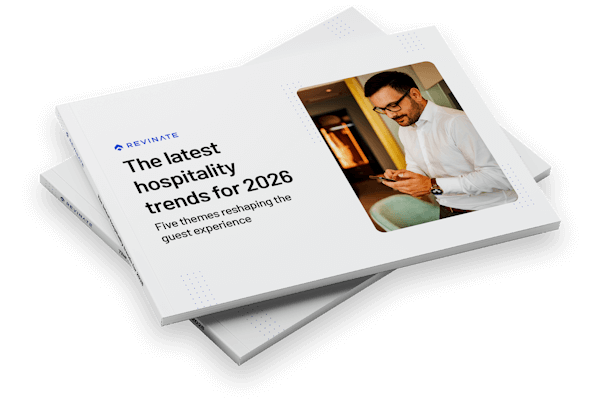Why winning guest loyalty is top priority
Why winning guest loyalty is top priority
This article was written by Max Starkov and originally published on Hospitality Net. Read more here.
Some industry experts claim that hotel guests are inherently disloyal, are interested only in the best deal, and, inevitably, end up booking with the OTAs — where they find the lowest rates.
I believe these “experts” are wrong. Hotel rates are important, of course, but people are looking for value, recognition, and personalized service delivery. A loyalty program can enhance the property’s value proposition and make your hotel the preferred place to stay when customers visit your destination.
Why do people like buying known things or from known brands? Because of the known value proposition, whether this is an Apple product or a hotel. Not many repeat visitors to any destination would like to experiment with a new hotel. If your property has provided your guests with above-and-beyond service, and if you keep them engaged after they have left, then they will choose your hotel when they come back to the destination. In other words, they will become loyal, repeat guests.
The best demonstration of guest loyalty in hospitality is the share of repeat business. Travel consumers are buried under an avalanche of options and offers, and if they repeatedly choose your hotel over the competing alternatives, obviously your hotel has an appeal above and beyond the competition. This appeal is a result of the perceived value proposition of your hotel and the travel consumer’s emotional attachment to your brand.
How to increase guest loyalty
Loyal guests do not come from Mars. These are past guests that have experienced your property’s value proposition firsthand, have been engaged by the property throughout their customer journey, have been recognized, and — naturally — provided with impeccable service, above customer expectations.
The more you know about your guests, their preferences, their likes and dislikes, their past stay history, and their RFM value (Recency, Frequency, and Monetary), the better you can deliver value, recognition, and personalized service. AI can make this process a thousand times more efficient and effective.
For hoteliers to be able to achieve the above, they need to implement, at the very least, a) a CRM technology and program, and b) a loyalty program (for brevity, I use this term to include points-based loyalty programs, reward programs, or guest appreciation programs).
Let’s talk about why I hold CRM to be the baseline requirement for hotels and why a CDP is a preferred option. A CRM focuses on managing customer relationships, whereas a CDP gives hoteliers a more comprehensive view of their guests by unifying different data sources and hence delivering personalized marketing and improved guest experiences.
What kind of loyalty program works best? Unless your hotel company joins a third-party loyalty program like Stash Hotel Rewards, I don’t believe a points-based loyalty program is suitable. A loyalty program in the form of a reward program or guest appreciation program is more preferable and easier to implement and manage at independents.
Case study: Loyalty programs of Marriott and Hilton
Marriott Bonvoy members grew 16% in 2024, reaching 228 million, generating 73% of U.S. room nights and 66% of room nights globally. Hilton also reported that last year their guest loyalty program Hilton Honors had reached 211 million members, a 17% increase from the previous year.
The myth that only corporate travelers need to join loyalty programs has been debunked a long time ago. In 2024, Marriott’s customer segment composition measured in room nights was 44% leisure, 33% corporate, and 23% group.
Just imagine if you were the GM of an average Marriott property in the U.S. Before you even get out of bed, you will know that 73% of tonight’s guests will be Bonvoy members. You will already know everything that you need to know about these arriving guests in order to provide above-and-beyond customer service: loyalty membership level (Basic, Silver Elite, Gold Elite, Platinum Elite, Titanium Elite, and Ambassador Elite), guest stay history, preferences, likes and dislikes, F&B consumption, history of requests and complaints, social media ambassadorship, and customer reviews on brand.com, Google, TripAdvisor, etc.
Now, just imagine if you were the GM of a hotel without both a loyalty program and CRM technology and program in place. You don’t even have to get out of bed to know that you know nothing about your guests arriving today: preferences, likes and dislikes, LTV value, history of requests and complaints, customer reviews, etc. How can you provide above-and-beyond service under these circumstances? Impossible!
3 main objectives of a hotel loyalty program
Direct online bookings driver
The direct online channel is the engine that generates the property’s repeat business, and repeat business reciprocates by fueling the direct online channel.
For many hotels, their direct vs indirect (OTAs, bedbanks and other intermediaries) online booking ratio is negative — 1:3 to 1:4 and even 1:5 (i.e., only 20% of online bookings are direct). Compare this to major hotel chains’ positive 3:1 to 4:1 ratio.
Why do hotels, and especially independents, have such an over-dependence on the OTAs? Systemic underinvestments in talent, technology, and digital marketing are the main reasons.
- Systemic underinvestment in technology: Normally, hoteliers spend 2.75% of net room revenue on technology, including payroll for IT personnel, STR). Compare this to 15% to 17% of revenue for Expedia or Booking.
- Systemic underinvestment in marketing: Hotels spend less than 2.5% of net room revenue on marketing, including payroll for the sales and marketing teams. Compare this to 36% of revenue for Booking and 54% for Expedia.
Unlike OTA customers, direct customers are a source of first-party data, which is more valuable than gold today. First-party and zero-party data is the prerequisite for and foundation of repeat business, excellent customer service, and personalized service delivery. Through CDP, CRM technology, and loyalty programs, the first-party and zero-party data allows hoteliers to “own” the digital customer journey and to increase direct bookings in a geometric progression.
Repeat business booster
Today, it is 5 to 10 times more expensive to acquire a new customer than to retain past customers. Unlike potential guests, past guests already know your property, your hotel product, and your location. All you need to convince them is that your property’s value proposition hasn’t changed.
The first step toward winning guest loyalty is acknowledging the importance of guest retention and repeat business. Unfortunately, very few hoteliers have strategies to target repeat business. If you ask today’s hoteliers, “On average, what % of your guests are repeat guests?” 90% would not know the correct answer.
Unless your hotel is a once-in-a-lifetime destination, by implementing CDP and CRM technology and a loyalty program, any hotel can increase repeat business from the current 8% to 10% rate to 20%, 30%, or more.
For many years, by implementing CRM technology and a loyalty program at my company Next Guest, now merged with Cendyn, we have tripled and quadrupled repeat business at our hotel clients.
Guest retention is the final phase of the digital customer journey. When hoteliers ignore this important phase, only 8% to 10% of guests at hotels on any given night are repeat guests. Meanwhile, 60% and more are repeat guests at the major hotel chains.
First-party data generator
A loyalty program is not just a “point-or discounts and perks-dispensing machine,” but an ever-expanding database of first-party and zero-party membership data, which is priceless in this era of privacy protection laws and moves by governments, search engines, and browsers.
First-party data is the customer data (past customers and guests, website users, opt-in email subscribers, lists of corporate travel managers, meeting planners, wedding and event planners, SMERF group leaders the property has been doing business with or at least in communications with, etc.) that comes from the PMS, CRS, WBE, from the property’s website, opt-in email sign-ups, and even customer lists sitting on laptops of sales and marketing personnel. This is where a CDP proves to be immensely useful to hoteliers. A CDP is where the data is merged securely, de-duped/synthesized from different sources.
Member preferences, lifetime value (LTV), past purchasing, and browsing behavior can be used actively to engage, convert and retain program members and to improve operations, customer service, marketing, CRM communications, personalization, upsells, and in-destination experiences.
Recommended action steps to improve guest loyalty
Implement a CRM — or, better yet, invest in a CDP
Start by implementing a CRM technology application as part of your hotel tech stack to ensure deep engagement with your past guests. The CRM provides “a single source of truth” for the guest data and creates 360-degree guest profiles, augments these with preferences, social media ambassadorship, customer engagement data, etc., which enables all hotel departments to do their job more efficiently and effectively.
The CRM technology (and lately the CDP) extracts guest data from various disjointed components of the hotel tech stack, even from laptops of the sales team, and creates a centralized database of guest profiles, which are cleansed, deduped, and appended with information from external data sources like main data providers, social media, and customer reviews. The CRM then ranks the guest profiles based on RFM Value (recency, frequency, monetary).
This newly created centralized CRM or CDP database is made available to all departments: from front desk and guest services to revenue management, marketing, and sales. For example, hoteliers are able to market effectively and efficiently and significantly increase repeat business via a well-structured CRM program, loyalty marketing, marketing automation, drip campaigns, etc.
As far as guest retention, the CRM technology provides automated post-stay communications, guest satisfaction surveys, guest retention marketing automation and drip marketing campaigns, guest recognition program management, and loyalty marketing. These fully automated CRM initiatives keep “the conversation going” with your past guests, keeping them engaged and steering them in the right direction: to book your hotel when they visit your destination again.
Create a loyalty program
Here, the options for creativity are endless. The rewards, points, perks, recognition benefits, etc. can be based on actual spend by members, on the LTV or RFM value of the guests, or simply on the number of room nights stayed in a calendar year. For example, using a simple reward program like “Book 10 roomnights and get 1 free night,” Hotels.com accumulated 75 million members in its program!
To satisfy the urge of today’s travelers for instant gratification, on the hotel website you create an “Instant Rewards” program and award 5% to 10% off to anybody who signs up. These instant reward signees could automatically join the lowest membership level. A webmaster can create this in 10 minutes and keep any Instant Reward member logged in for life — thus creating “gated member-only rates” that the OTAs and other distributors cannot complain about.
Even a small, 10-room hotel can create a simple loyalty program, based on the number of room nights stayed in a calendar year, or any other metric.
Join a third-party hotel reward program
Another option is joining an existing Hotel Reward Program like Stash Hotel Rewards (400-member hotels), Global Hotel Alliance (GHA Discovery — 400-member hotels), or Guestbook (150-member hotels). Some independents have chosen to work with Points.com (loyalty infrastructure that integrates with existing hotel systems), Laasie.ai (uses AI to match guests with the most compelling rewards based on behavioral data), etc.
The moral of the story? You cannot increase direct bookings and repeat business — and provide above-and-beyond customer service — unless you have implemented CRM technology and a loyalty program to keep “the conversation going” with your past guests and convey the property’s value proposition to new and potential guests.
Ready to prioritize loyalty and drive more direct bookings? Sign up for our Direct Booking Mastery Certification program and learn how to build loyalty that turns stays into stories and drives real revenue results.
This site is protected by reCAPTCHA and the Google Privacy Policy and Terms of Service apply. View our Terms & Conditions here. *Required fields.






